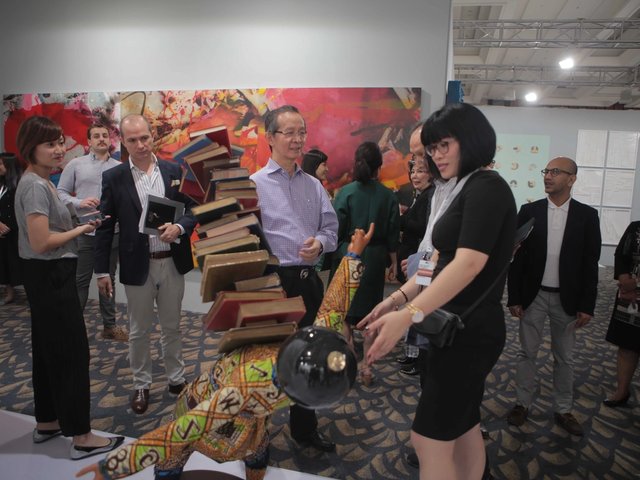Those used to the cultural desert Jakarta became under Suharto would have been delighted to arrive at the capital’s five-star Regent Hotel last November. In the hotel’s ballroom, auctioneers Batavia and Amana, supported by the Jakarta Arts Council, were offering over 100 paintings by the likes of Van Gogh, Degas and Picasso, valued at millions of dollars.
But those who looked closely smelled a rat. Many works were labelled “seems to be by” or “inspired by”. “Observation of this oil painting… indicates an old painting,” said one certificate. Press releases listed prices of up to $4 million, although some paintings were privately offered for as little as R13 million ($1,430).
It turned out Batavia and Amana had been founded just eight months earlier by a shadowy figure known as Syahdam. The Jakarta Arts Council, while better known, was only founded two years ago. Its expert Soelebar Sukarman, recruited for the sale, tried to counter the rising outcry by arguing that “emotions” were more important than provenance. The National Museum, however, was more canny—it refused a “gift”of a “Van Gogh” sketch which bore the signature “Vincent.”
After the press weighed into the controversy, Sinta Nuriyah, wife of Indonesian President Abdurrahman Wahid, cancelled a scheduled appearance at the exhibition. Finally, just hours before the sale, Batavia and Amana gave up, announcing it was “postponing” it for three months.
“They were facing a very disgruntled public,” says art critic Amir Sidharta. “People came hoping to see masterpieces and instead they got a bunch of 100% bogus art. It was an insult to forgery.”
Other sources, speaking off the record, said the auction was apparently organised by speculators who had bought these works during the salad days of the early- to mid-1990s and were hoping to get rid of their now-depreciated mistakes. They pointed to the highly suspicious role of the Jakarta Arts Council, suggesting many of its members had been such collectors.
“You don’t discount any possibility,” says Sidharta. “After all, this is Indonesia.”


